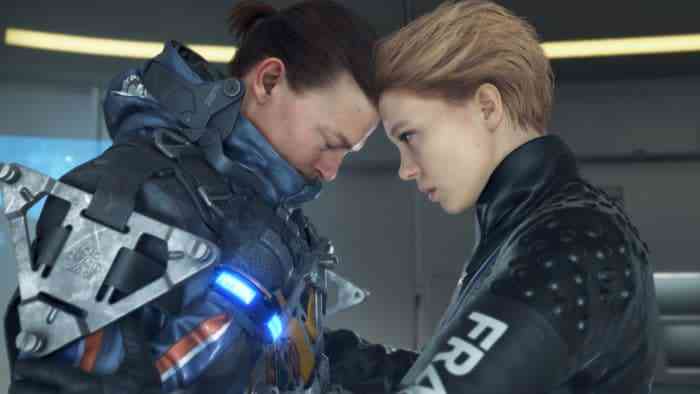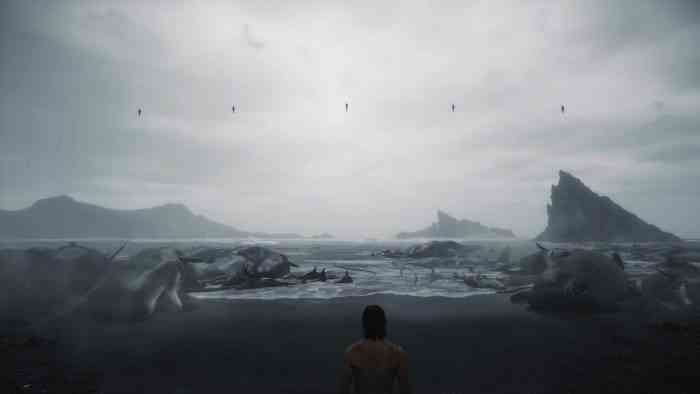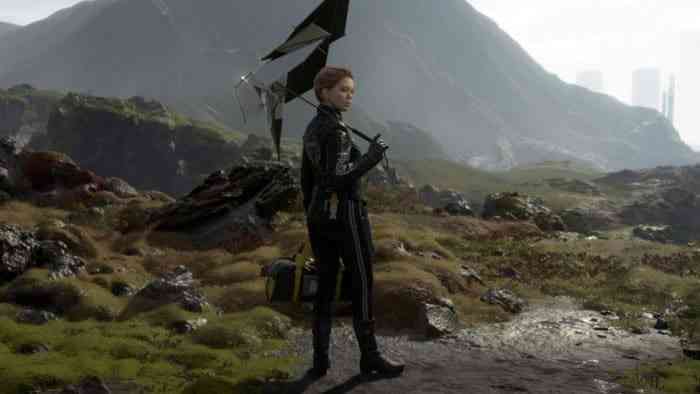So The Original Death Stranding Wasn’t a Director’s Cut?
It’s another year, and thanks to endless marketing cycles that demand content have multiple chances to get noticed by consumers with ever lower attention spans, we’re being graced with another release of Hideo Kojima’s Death Stranding. This time it’s called Death Stranding: Director’s Cut, and although it’d be easy to argue semantics about whether the original game was anything other than a director’s cut, I found myself eager to dive back into Kojima’s eerily prophetic world. It was a great game after all, and surely some additional features couldn’t hurt.
The original game, for all the controversy about what it was or wasn’t, had a vision that lives on in the Director’s Cut. As human beings (still) in the midst of an isolating and challenging global event, Sam Porter Bridges serves as a stand-in for all of us. The struggles look and feel immense, and the loneliness of the gameplay loop intentionally slows you down, holds you back, and prioritizes immediate need. Only once you’ve become comfortable with that restriction does the game give you another option that eases the task.

The throughline? Connection. Through working together and striving for more, Sam’s task becomes easier. But never for long. There’s always another mountain to climb, or an impossibly tall cargo stack to balance. That intended metaphor of that cycle isn’t something that really hit me when I played the original (especially in the vacuum of a review embargo), but it’s undeniably one of the main things Kojima hammers home in Death Stranding.
Most impactful to the experience of playing the game vs the original, is the PS5’s horsepower. Death Stranding: Director’s Cut offers both a fidelity and a performance mode, targeting native 4k and 60 fps respectively. It looks outstanding. The lighting, material quality, and overall sharpness in the Director’s Cut is truly excellent. You like skin? You’ll see a lot of really convincing-looking skin here. Performance is rock solid too. In my experience the fidelity mode hits 60 fps almost all the time – unsurprising given how well the PC version of the game performed. The higher frame rate truly is transformative though, and makes each of Sam’s tasks feel more controlled. So too does the DualSense’s haptic engines. Gently squeezing the triggers against resistance feels way better than on other, floppier triggers. Making tiny corrections to angle and chosen path are much easier at 60 frames per second, and it actually makes the overall experience feel smoother.
As it turns out, Death Stranding’s controls are extremely granular. No, this isn’t a game about blowing stuff up or doing flips, but there’s a fantastic feeling of satisfaction to be gained just walking around. That is, if you’ve got the patience.

The gameplay demands it, and the storytelling responds in kind. This is a Kojima game through and through, and you’ll likely already know if you like that or not. Long, lingering close ups of characters’ faces, ridiculously on-the-nose character names, and the most Hollywood of Hollywood camera angles are all here. For the most part, it’s good. Norman Reedus is the weak link, but thankfully Tommie Earl Jenkins, Lea Seydoux, and Troy Baker among others are there to flex their muscles when they need to.
The story is absolutely laced with pseudoscience, but it’s the kind of nonsense that’s just believable enough to get your imagination running. It’s also repetitive, covering some points almost ad nauseum while ignoring the more interesting nuances or gaps in the puzzle. A lot of those gaps are filled in with text much like in MGSV: The Phantom Pain, but I would have liked to see more exposition around the edges of the gorgeous world of Death Stranding. As I said in my review of the PC version: “Show, don’t tell is on full display right away, where we see timefall and its effects, an inverted rainbow, and several other big story hints within the first 30 seconds of the game. His shot selection really captures the imagination, and the only shame here is that more of the story isn’t done up to cutscene quality. Budgets, amirite?”

Writing about this game for the third time, it’s been challenging to cover new ground. I’m viscerally disturbed by how much and how quickly the ideas of Death Stranding have become reality. But ultimately, most of my PS4 and PC reviews of Death Stranding still hold. Thankfully, there is some new content. The early game is a lot easier to get up to speed with thanks to some new items and enhanced tips content, while the Ruined Factory and Cargo Catapult do meaningfully add to the meta-game of rebuilding America. They’re peripheral though, and not exactly in line with what I’d have preferred in an expanded understanding of Death Stranding’s world. I’m also not sure who’s interested in racing in Death Stranding, but it’s now an option. Is it worth upgrading just for the Director’s Cut content? No. But if you haven’t experienced it, Death Stranding remains a great and weird adventure from one of the industry’s most infamous minds.
Hideo Kojima is the physical manifestation of the Director’s Cut. Often times his idea of a nice neat package is like having a 6 hour version of 2001: A Space Odyssey, but I’m ever so grateful for his presence in our industry. He’s not scared to take chances and make something people don’t like, and more often than not, he makes things I like or can at least appreciate. Death Stranding is some combination of all those things. I appreciate it, enjoy playing it, and on this third playthrough became more convinced than ever that there’s something really special here for those willing to take the time to stare at their boots.
**PS5 review code provided by the publisher**
The Good
– Perfect performance
– Makes the mundane exciting
– Still just as entertaining
The Bad
– Some poorly paced story elements
– Kojima as heck

